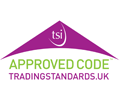Guidance on Legionnaires' disease for Landlords
03 Mar 2015
Landlords of residential accommodation have responsibilities for combating Legionnaires\' Disease. Health and safety legislation requires that landlords carry out risk assessments for the Legionella bacteria which cause Legionnaires\' Disease and thereafter maintain control measures to minimise the risk. Most rented premises will be low risk but it is important that risk assessments are carried out and control measures introduced.
This note is intended to give a brief guide to what the landlord should do. Further advice is available from the Health & Safety Executive.
Landlords are under a duty to ensure that the risk of exposure to tenants, residents and visitors by Legionella is properly assessed and controlled.
Normally there is no reason why the landlord should not carry out this risk assessment himself/herself so long as they are competent. Usually there will be no need to employ a consultant. The assessment should be a straight forward simple exercise in ordinary domestic premises.
For most residential settings the risk assessment may well show the risks are low so long as simple control measures are followed. This will apply to houses or flats with small domestic type water systems where the water turnover is high. Provided the risk assessment shows that the risks are insignificant and the control measures are being properly managed no further action would be necessary. It is important, however, to keep the assessment under review periodically in case anything changes to the system.
As already indicated, landlords are responsible for making sure that the risks involving Legionella are properly assessed and controlled. Where a managing agent is used the management contract should specify who has responsibility. Landlords must assume that unless the managing agent takes on this responsibility, they as landlord will be responsible for compliance.
For more information please contact our office or email blog@ultralets.co.uk

Rated 5 stars on Google
by our customers

Talk to an Ultralets
team member







